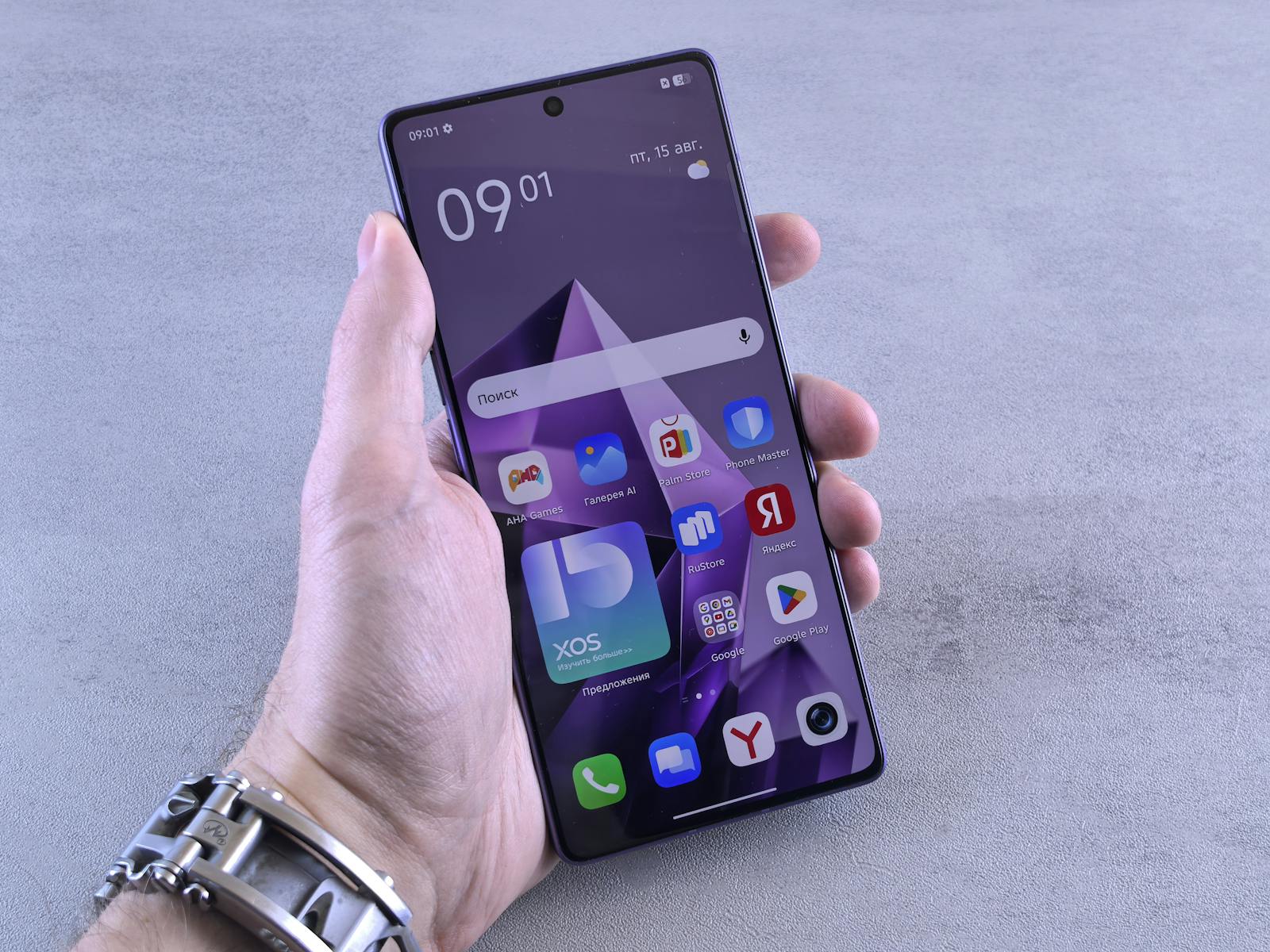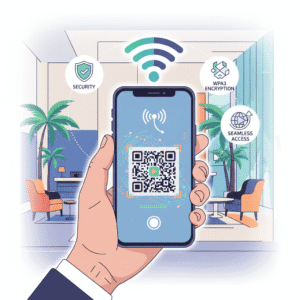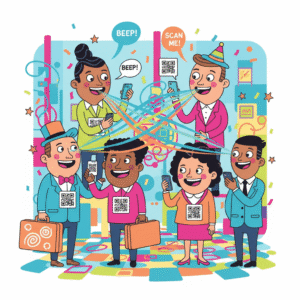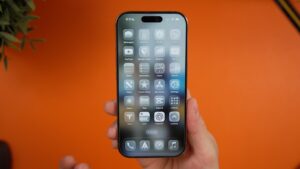Table of Contents
- QR Code App Integration Examples In Retail And E‑Commerce
- Real‑World QR Code Use Cases For Hospitality And Travel
- QR Code Application Integrations In Healthcare And Public Safety
- QR Code App Integration Examples In Education And Campus Services
- Real‑World QR Code Use Cases In Event Management And Entertainment
- Frequently Asked Questions
- Conclusion
Key Points
- QR code technology bridges physical and digital experiences across multiple industries.
- Successful integration hinges on seamless user flow, robust backend support, and clear value propositions.
- Data gathered from QR interactions can power personalization, inventory control, and safety protocols.
- Security and privacy must be baked into every QR code application integration to protect users.
- Continuous testing and analytics are essential to refine QR code app integration examples over time.
Introduction
QR codes have moved far beyond the novelty of quick URL redirects. Today they serve as the connective tissue that unites physical touchpoints with sophisticated digital ecosystems. From a shopper scanning a product label to a patient accessing medical records, the breadth of real‑world QR code use cases demonstrates a maturity that many developers only began to imagine a decade ago. This evolution has been driven by three core forces: ubiquitous smartphone cameras, advances in cloud‑based APIs, and a growing expectation for contactless, frictionless interactions.
For businesses looking to stay competitive, understanding QR code app integration examples is no longer optional—it is a strategic imperative. The right integration can streamline checkout, enrich loyalty programs, and generate actionable data that fuels smarter decision‑making. Conversely, a poorly designed QR experience can erode trust, create security vulnerabilities, and waste valuable marketing spend. This article walks you through proven implementations across five high‑impact sectors, offering step‑by‑step guidance, real‑world case studies, and best‑practice recommendations that you can adapt to your own product roadmap.
Whether you are a developer, product manager, or marketer, the insights below will equip you with a comprehensive toolkit for building QR code application integrations that deliver measurable ROI like QR Code Genie or QR Master Plus. Let’s explore how industry leaders are turning a simple square pattern into a powerful catalyst for growth and operational excellence.
QR Code App Integration Examples In Retail And E‑Commerce
Retail environments have become a proving ground for QR code app integration examples because they combine high foot traffic with a clear need for speed and personalization. By embedding QR codes on product packaging, shelf tags, and in‑store signage, brands can create a direct bridge between the physical aisle and a rich digital experience that drives conversion, loyalty, and data capture.
Scanning And Checkout Process
One of the most straightforward QR code use cases in retail is the self‑service checkout. Customers scan a QR code printed on a product label using the retailer’s mobile app, which instantly pulls up product details, price, and availability. The app then adds the item to a virtual cart, allowing shoppers to complete the purchase without ever queuing at a traditional register. This approach reduces labor costs, shortens dwell time, and improves overall store throughput.
Implementation typically involves three steps: (1) generating a unique QR payload that references the SKU in the inventory management system, (2) configuring the mobile SDK to decode the payload and retrieve product data via a secure API, and (3) integrating a payment gateway that supports tokenized transactions. Retailers such as Walmart and Target have piloted this model in select stores, reporting checkout time reductions of up to 40 % and a measurable lift in average transaction value.
Loyalty And Personalized Offers

QR codes also excel at delivering hyper‑personalized promotions at the point of sale. By linking a QR code to a customer’s loyalty profile, retailers can present real‑time discounts, bundle suggestions, or exclusive content that aligns with purchase history and preferences. For example, a clothing retailer might display a QR code on a mannequin that, when scanned, unlocks a 15 % off coupon for matching accessories based on the shopper’s past purchases.
To make this work, the QR code payload must contain an encrypted user identifier that the backend can resolve to a loyalty record. The app then fetches the relevant offer, applies any eligibility rules, and displays the promotion in a seamless overlay. Brands that have adopted this strategy, such as Sephora’s “Beauty Insider” program, have seen loyalty enrollment rates climb by more than 25 % and repeat purchase frequency increase dramatically.
Data Analytics And Inventory Management
Beyond the front‑of‑house experience, QR code app integration examples provide valuable back‑office intelligence. Each scan generates a data point that can be aggregated to reveal product popularity, dwell time, and conversion pathways. By feeding this information into a real‑time analytics dashboard, retailers gain a granular view of in‑store behavior that was previously only accessible through costly foot‑traffic sensors.
Furthermore, QR codes can trigger automated inventory updates. When a shopper scans a product and completes a purchase, the system decrements the on‑hand quantity, alerts replenishment teams, and even re‑orders stock through a vendor‑managed inventory (VMI) integration. Companies like Zara have leveraged this capability to maintain optimal stock levels across thousands of SKUs, reducing out‑of‑stock incidents by nearly 30 %.
Real‑World QR Code Use Cases For Hospitality And Travel
The hospitality and travel sectors thrive on delivering memorable, frictionless experiences, making them fertile ground for real‑world QR code use cases. From check‑in to in‑room services, QR codes enable guests to navigate their stay with minimal physical contact, while operators collect insights that drive operational efficiency and upsell opportunities.
Contactless Room Access
Modern hotels are replacing traditional key cards with QR‑based mobile keys. Upon reservation confirmation, the property’s property‑management system (PMS) generates a time‑limited QR code that guests receive via email or the hotel’s app. The code is scanned at the door lock, where a secure Bluetooth handshake validates the guest’s identity and unlocks the room. This contactless approach not only enhances hygiene but also reduces the cost of producing plastic key cards.
Key technical considerations include end‑to‑end encryption of the QR payload, integration with the door lock firmware via an IoT gateway, and compliance with GDPR or local privacy regulations. Hotels such as Marriott and Hilton have rolled out this technology across multiple markets, reporting a 20 % decrease in front‑desk staffing needs and higher guest satisfaction scores.
Digital Travel Itineraries
Airlines and travel agencies use QR codes to deliver dynamic itineraries that adapt to real‑time changes. A QR code placed on a boarding pass links to a mobile‑friendly page displaying flight status, gate information, baggage allowances, and personalized travel tips. If a flight is delayed, the backend pushes an updated QR payload, ensuring the passenger always sees the latest data without printing new documents.
Implementing this use case requires tight integration between the airline’s reservation system (CRS) and a cloud‑based content delivery network (CDN). The QR code contains a short, signed token that the mobile app exchanges for a JSON payload via a RESTful endpoint. Leading carriers like Delta and Emirates have adopted this model, noting a reduction in customer service calls related to flight updates by up to 35 %.

Restaurant Menu And Ordering
In the post‑pandemic era, QR‑enabled menus have become a staple in restaurants worldwide. Diners scan a QR code on their table to access a digital menu, place orders, and even pay—all from their smartphones. This reduces the need for physical menus, speeds up table turnover, and provides chefs with real‑time order data that can improve kitchen workflow.
To create a robust QR code app integration example for dining, restaurateurs must connect the QR scanning layer to a point‑of‑sale (POS) system, a kitchen display system (KDS), and a payment processor. Data security is paramount, especially when handling credit‑card information, so PCI‑DSS compliance is a non‑negotiable requirement. Chains such as Chipotle and Shake Shack have reported a 15 % increase in average ticket size after introducing QR‑based ordering, attributed to upsell prompts and streamlined service.
QR Code Application Integrations In Healthcare And Public Safety
Healthcare and public safety organizations are turning to QR code application integrations to improve patient outcomes, secure medication distribution, and enhance emergency response. The high stakes of these sectors demand solutions that are both reliable and compliant with strict regulatory frameworks such as HIPAA and FDA guidelines.
Patient Record Access
QR codes printed on wristbands or bedside cards can give authorized clinicians instant access to a patient’s electronic health record (EHR). When a caregiver scans the code with a secure mobile device, the system authenticates the user, decrypts the token, and presents a read‑only view of critical data such as allergies, medication lists, and recent lab results. This reduces chart‑pulling time and minimizes the risk of medication errors.
Successful deployments require integration with the hospital’s EHR platform (e.g., Epic or Cerner) via HL7/FHIR APIs, robust role‑based access control, and audit logging for compliance. Institutions like Mayo Clinic have reported a 12 % reduction in adverse drug events after implementing QR‑based patient identification, highlighting the tangible safety benefits of this integration.
Medicine Authentication
Counterfeit drugs remain a global challenge, and QR code application integrations offer a scalable verification method. Manufacturers embed unique QR codes on packaging that, when scanned, validate the product’s authenticity against a blockchain‑based ledger. Pharmacists and patients can instantly confirm that the medication is genuine, trace its origin, and view expiration dates.
The technical stack typically involves a QR code generator linked to a distributed ledger service, a mobile verification app, and an API gateway that mediates queries. Countries such as India and Brazil have mandated QR‑based serialization for certain drug categories, and early adopters report a significant drop in counterfeit incidents, bolstering public confidence in the supply chain.
Emergency Response Mapping
First responders leverage QR codes to quickly locate hazards, retrieve building schematics, and access real‑time incident data. In large venues, QR codes placed at strategic points can be scanned to pull up evacuation routes, fire extinguisher locations, and even live video feeds from security cameras. This accelerates decision‑making and improves overall safety outcomes.
Implementing this scenario involves integrating QR scanning capabilities with a geographic information system (GIS) and a computer‑aided dispatch (CAD) platform. The QR payload contains a geofence identifier that the backend resolves to a set of layered maps and sensor data. Cities like Singapore and Copenhagen have incorporated QR‑enabled emergency wayfinding into their smart‑city initiatives, noting faster egress times during drills.
QR Code App Integration Examples In Education And Campus Services
Educational institutions are embracing QR technology to streamline administrative processes, enrich learning experiences, and foster campus safety. By embedding QR codes across campus assets—from lecture halls to library books—schools can create a connected ecosystem that supports students, faculty, and staff.

Campus ID And Attendance
Many universities now issue QR‑based digital IDs that double as attendance trackers. Students scan the code at the entrance of a classroom using a mobile app, which records their presence in a central attendance database. This eliminates manual roll‑calls, provides real‑time analytics for instructors, and can even trigger automated notifications for absent students.
Key integration points include the student information system (SIS), a secure authentication service (e.g., SAML or OAuth), and a reporting dashboard. Institutions such as the University of Arizona have reported a 30 % reduction in administrative overhead related to attendance recording, while also improving student engagement through instant feedback.
Library And Resource Access
QR codes have transformed how patrons interact with library collections. By placing a QR code on the spine of a book, users can scan to view availability, reserve the item, or access supplementary digital content such as author interviews or related research papers. This reduces the need for physical card catalogs and speeds up the discovery process.
Integration typically involves the library management system (LMS) exposing an API that returns bibliographic data in JSON format. The mobile app parses this response and presents an intuitive UI. Libraries that have adopted QR‑enabled discovery, like the New York Public Library, have seen circulation rates rise by up to 18 % and a noticeable decline in “shelf‑search” queries.
Interactive Learning Modules
QR codes can embed supplemental multimedia into traditional classroom materials. Teachers place QR codes on printed worksheets or lab equipment, which students scan to access video tutorials, simulations, or augmented‑reality (AR) overlays that deepen comprehension. This blended learning approach caters to diverse learning styles and promotes active participation.
To implement, educators generate QR codes linked to a learning‑management system (LMS) that hosts the multimedia assets. The QR payload may contain a short URL with an embedded token that grants temporary access to premium content. Schools that have piloted this strategy, such as Boston College’s STEM labs, report higher test scores and increased student satisfaction with the hands‑on learning experience.
Real‑World QR Code Use Cases In Event Management And Entertainment
Live events and entertainment venues are ideal platforms for real‑world QR code use cases because they bring together large, diverse audiences who expect fast, contactless interactions. From ticket validation to immersive experiences, QR codes serve as a versatile conduit for data capture, engagement, and revenue generation.
Ticketing And Entry Management
QR‑based e‑tickets have become the industry standard for concerts, sports games, and conferences. Attendees receive a QR code via email or a mobile app, which is scanned at the gate to verify authenticity and grant entry. This eliminates paper tickets, reduces fraud, and allows organizers to track entry metrics in real time.
The integration workflow includes the ticketing platform generating a signed QR payload, a gate‑side scanner linked to a cloud‑based validation service, and a real‑time dashboard for capacity monitoring. Companies like Ticketmaster and Eventbrite report faster entry times—often under five seconds per guest—and a 40% drop in counterfeit ticket incidents after moving to QR‑based validation.
Sponsor Engagement And Analytics
QR codes offer sponsors a direct line to event attendees. By placing QR codes on banners, product displays, or program guides, brands can drive users to interactive landing pages, exclusive offers, or social‑media challenges. Each scan provides granular data on audience demographics, dwell time, and conversion rates, empowering sponsors to measure ROI with precision.
To capture this data, event organizers integrate the QR scanning layer with a marketing automation platform (e.g., HubSpot or Marketo). The QR payload includes a campaign identifier that maps each scan to a specific sponsor activation. Studies from major trade shows, such as CES, show that QR‑driven sponsor interactions increase lead capture rates by up to 25% compared with traditional QR‑less approaches.
Live Feedback And Augmented Reality

Audience participation can be amplified through QR‑enabled live polls, Q&A sessions, and AR experiences. Attendees scan a QR code projected on stage to submit questions, vote on topics, or unlock AR filters that overlay digital graphics onto the venue’s environment. This creates an immersive, two‑way dialogue that keeps audiences engaged throughout the event.
Technical implementation involves a real‑time polling service (e.g., Slido) and an AR SDK that renders content based on the scanned token. Data from polls is aggregated instantly and displayed on large screens, while AR experiences are delivered through the event’s official app. Festivals like Coachella have leveraged QR‑driven interactive features to boost social media mentions and extend the event’s digital footprint beyond the physical dates.
Conclusion
What are the main benefits of using QR codes in business applications?
QR codes provide a bridge between offline and online experiences, enabling instant access to digital content without the need for manual data entry. They reduce friction in processes such as checkout, check‑in, and information retrieval, which leads to faster transaction times and higher customer satisfaction. Additionally, each scan generates a data point that can be analyzed for insights on user behavior, inventory trends, and campaign effectiveness.
From a cost perspective, QR codes are inexpensive to produce and can be printed on existing marketing materials, product packaging, or signage. They also support contactless interactions, which have become a health and safety expectation in many industries. When combined with secure backend integrations, QR codes can enhance loyalty programs, enable personalized offers, and streamline compliance reporting.






